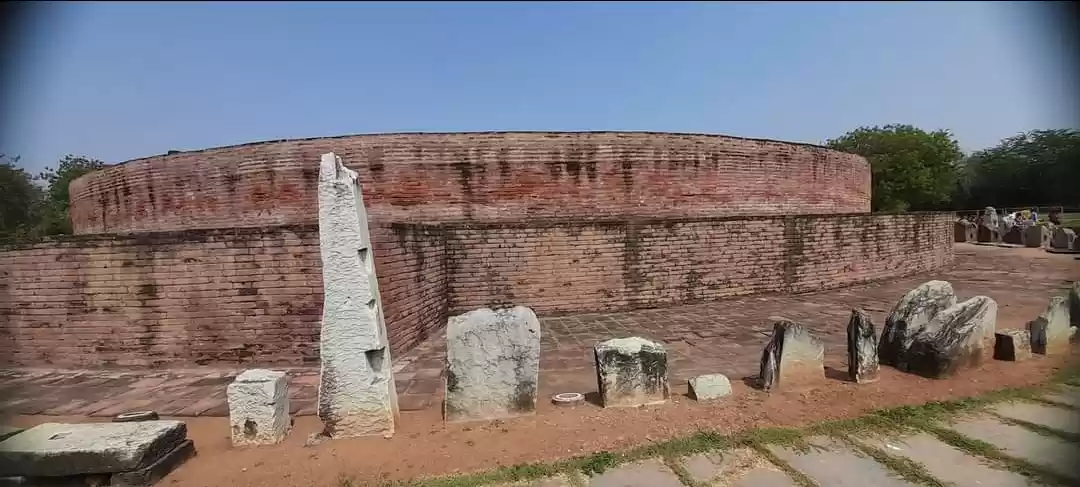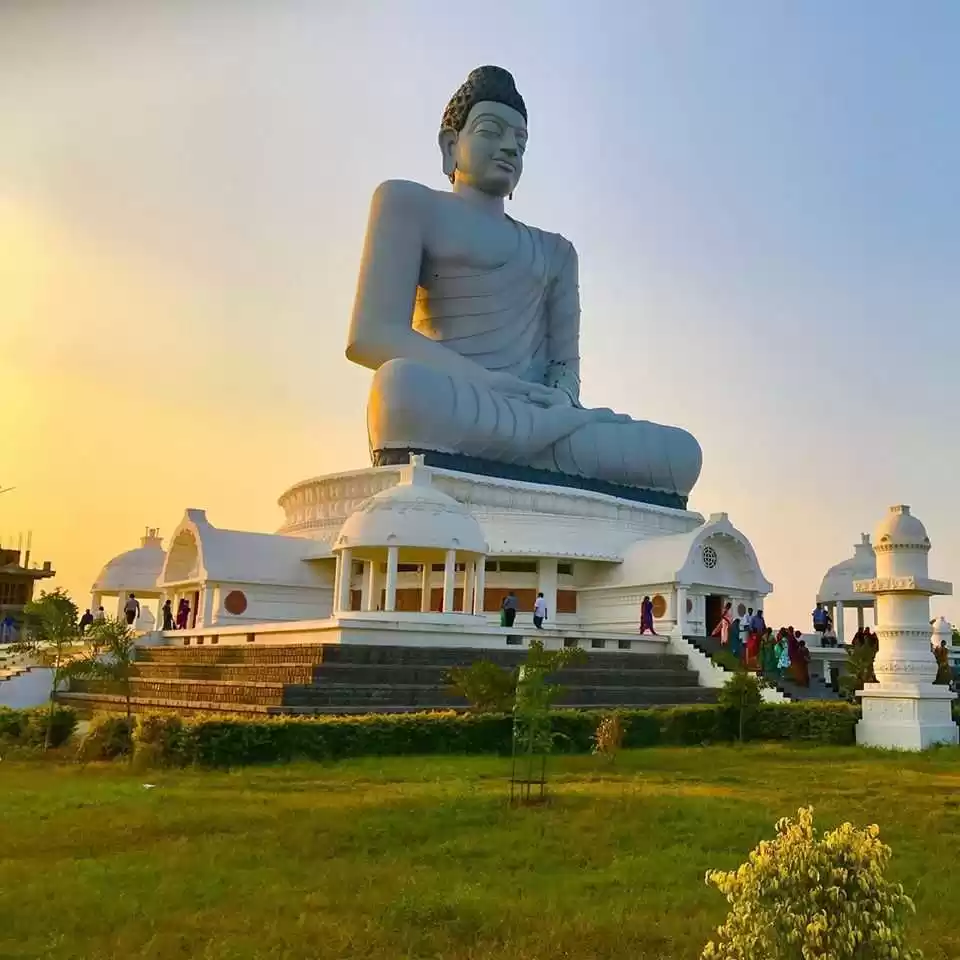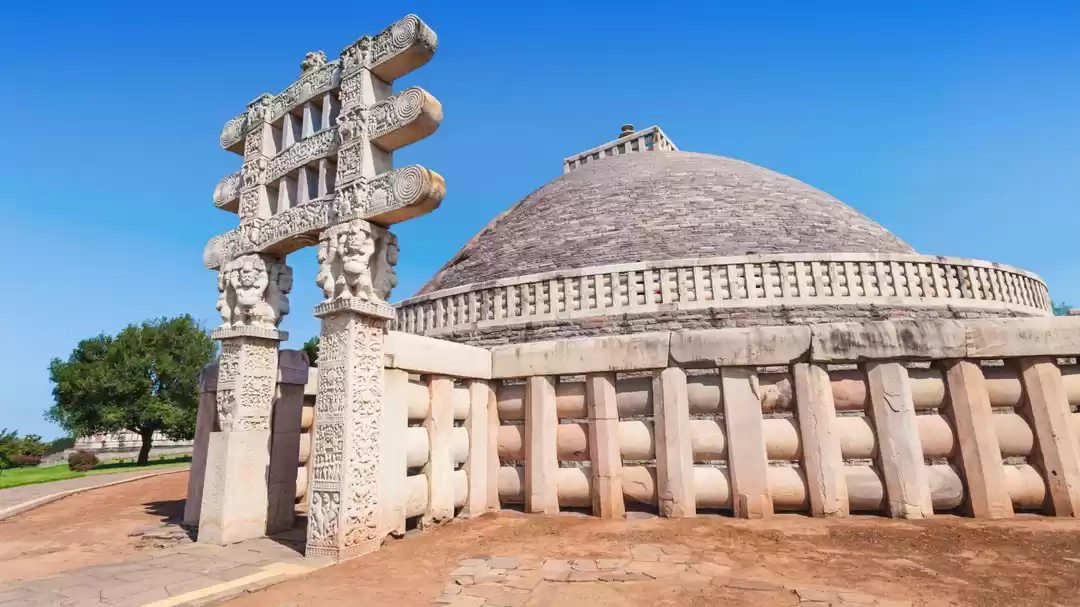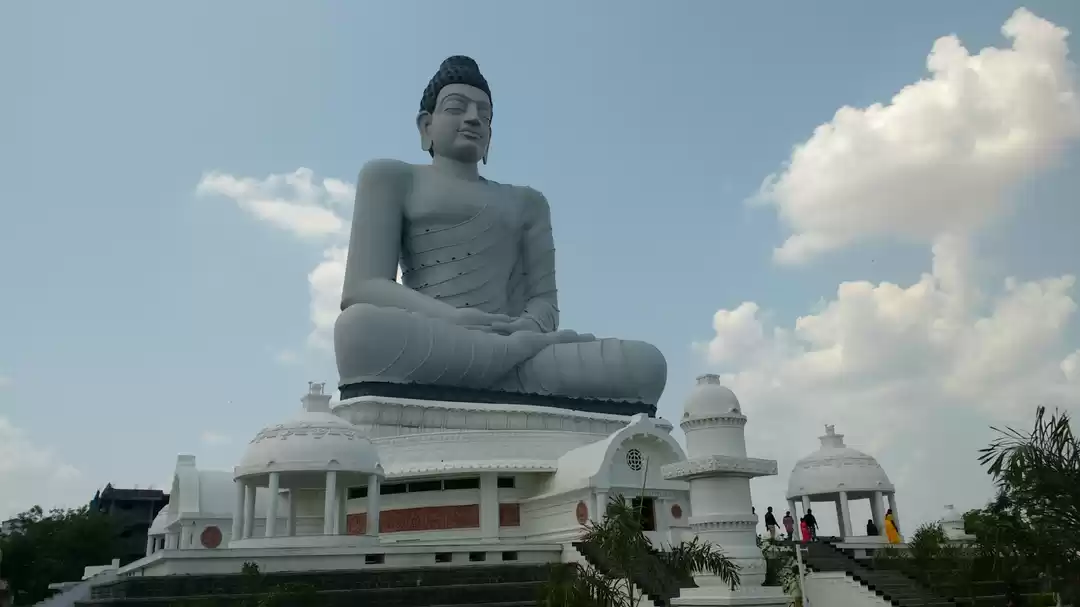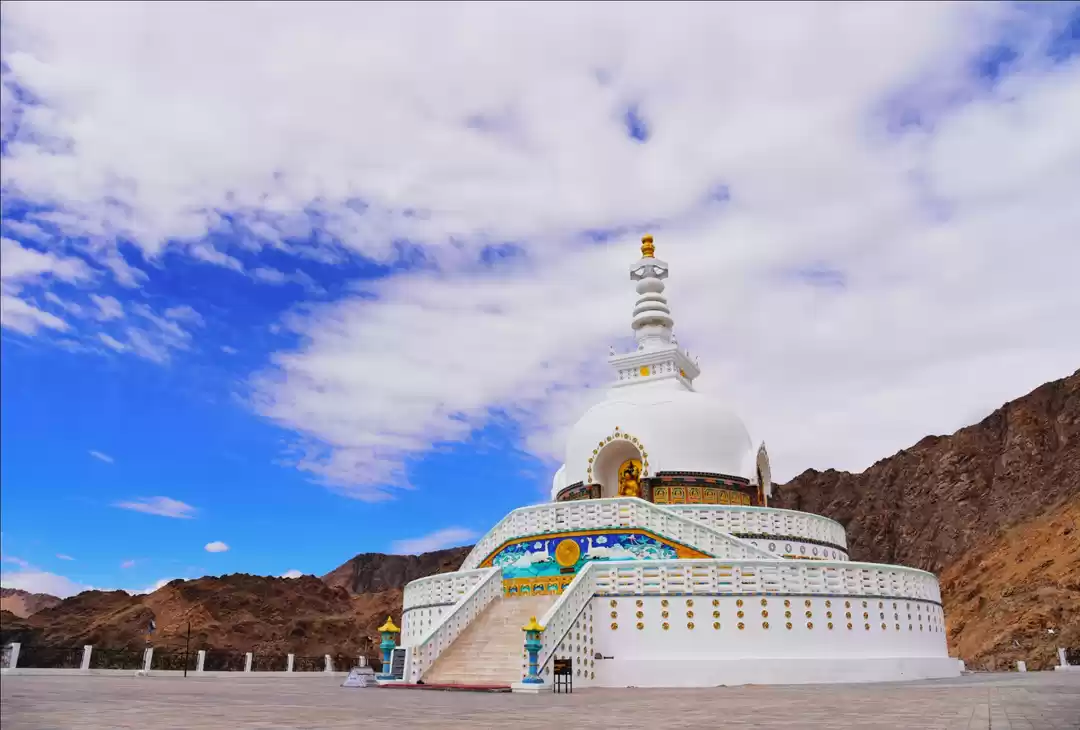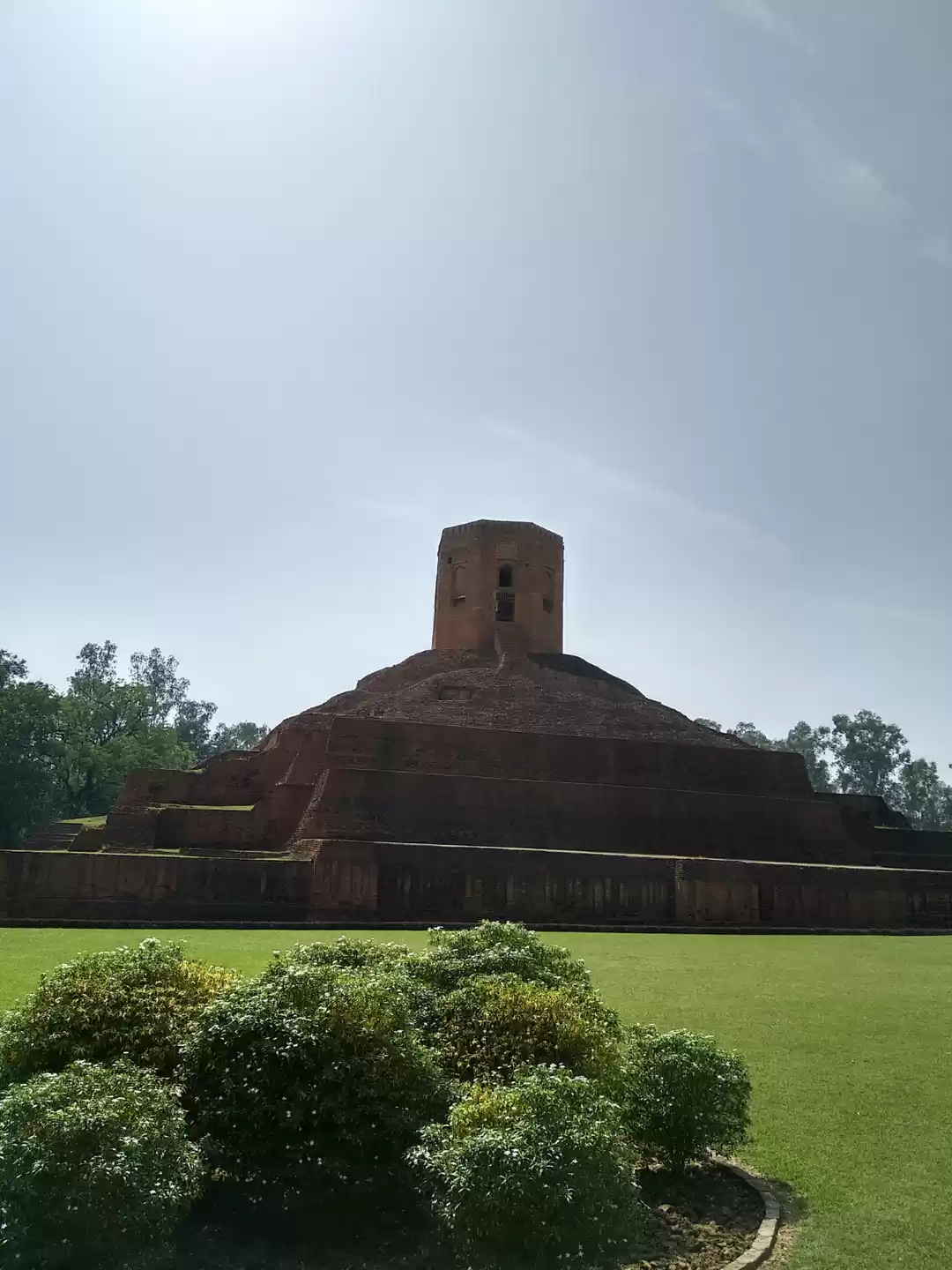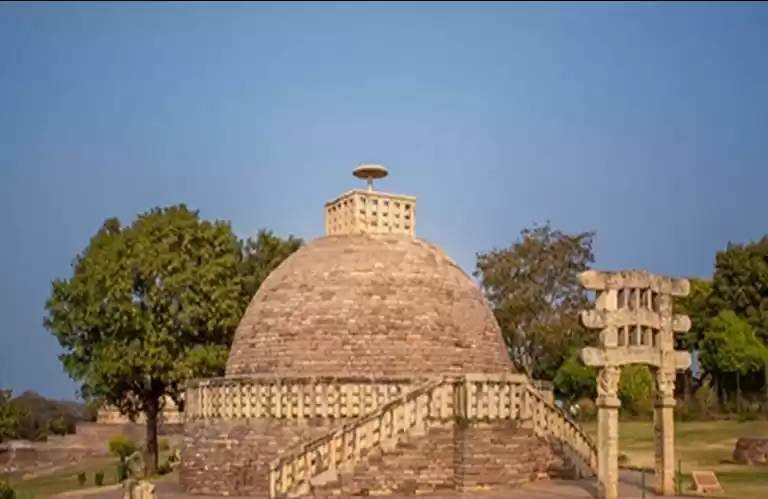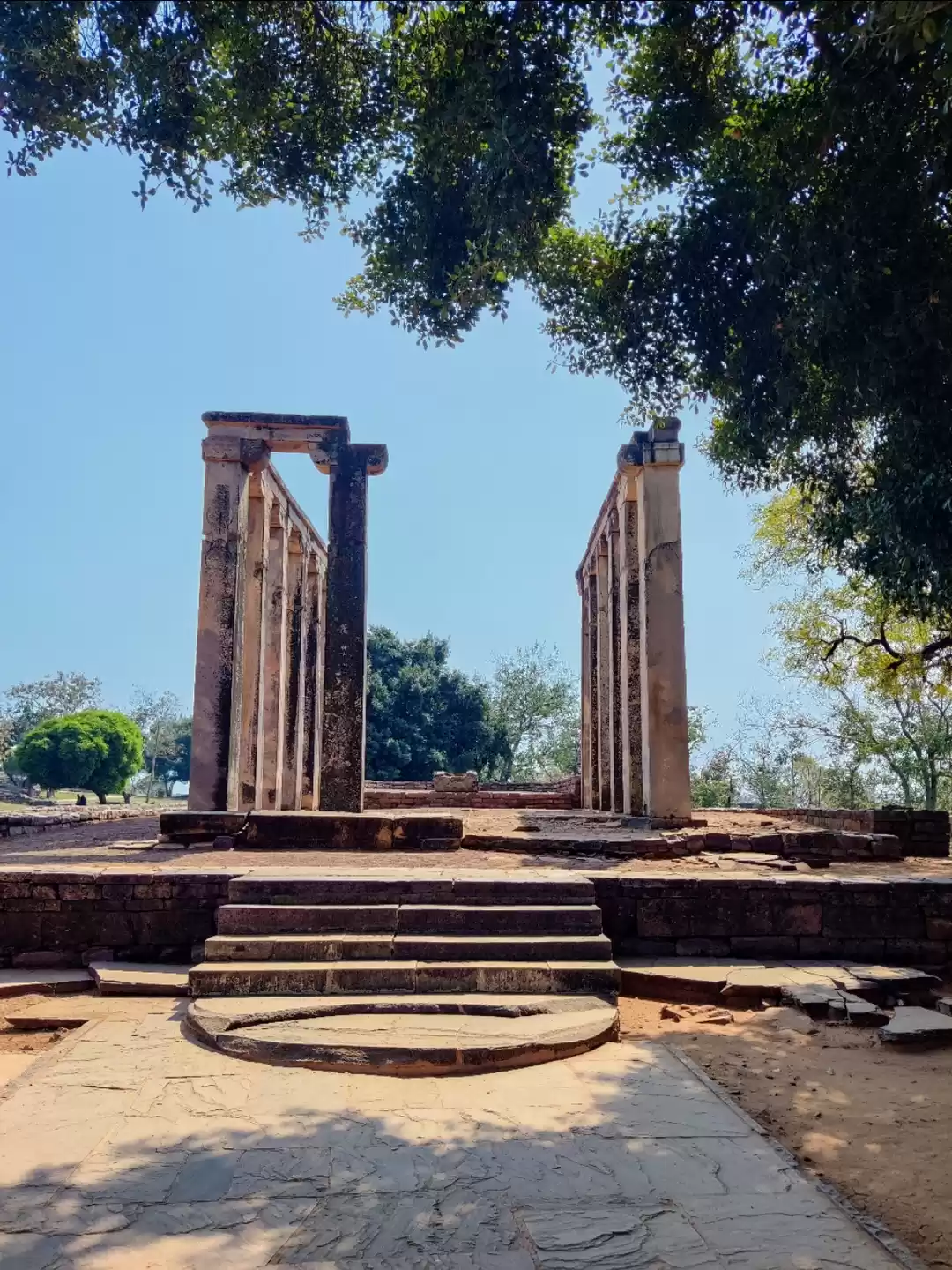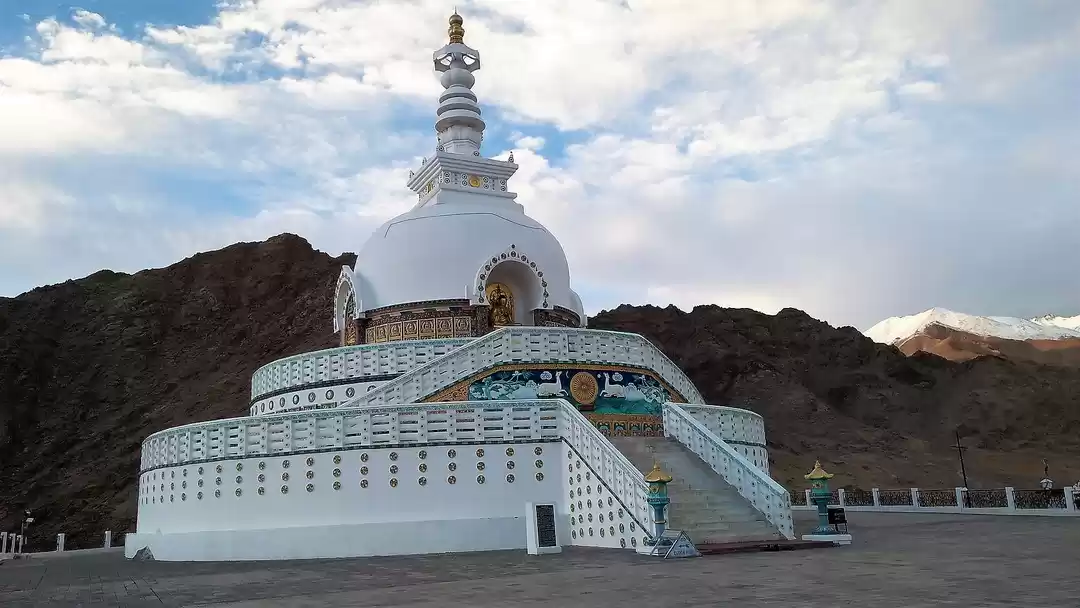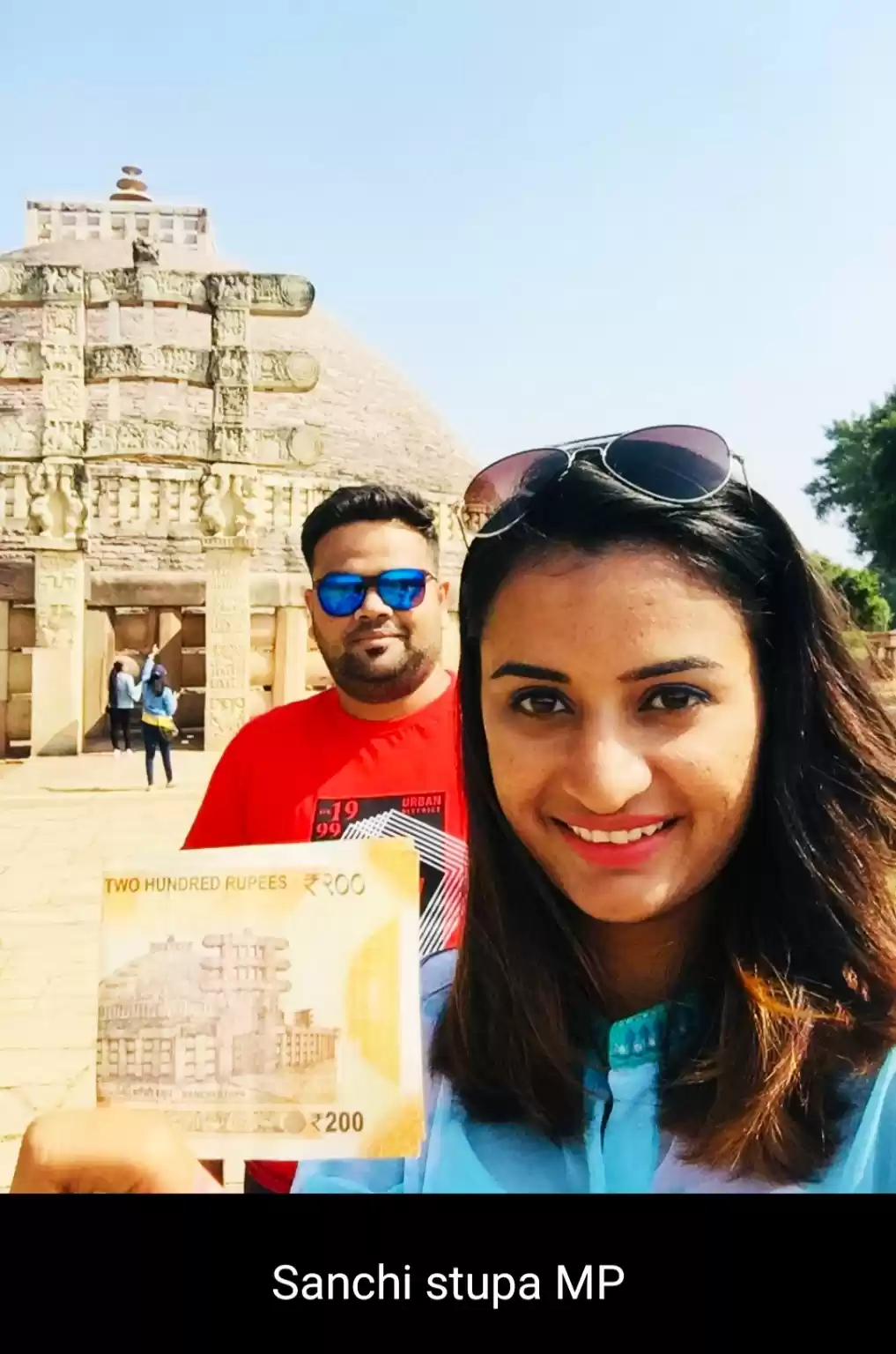Are you fascinated by the rich and diverse history of India? Do you want to explore the ancient and magnificent monuments that reflect the glory of the past? If yes, then you should not miss the opportunity to visit the Amaravati Stupa, one of the oldest and largest Buddhist stupas in the world. Located in the Guntur district of Andhra Pradesh, the Amaravati Stupa is a marvel of architecture, art, and culture that dates back to the 3rd century BCE.
In this article, we will tell you everything you need to know about the Amaravati Stupa, its history, architecture, significance, location, and tourism. Read on to discover the secrets of this amazing monument and plan your trip to witness its beauty and splendor.

Introduction
The Amaravati Stupa, also known as the Amaravathi Mahachaitya, is a circular mound-like structure that was built to commemorate the life and teachings of Gautama Buddha, the founder of Buddhism. The stupa is considered to be one of the most sacred and important sites for Buddhists, as it is believed to contain the relics of Buddha and his disciples. The stupa is also renowned for its exquisite sculptures and carvings that depict scenes from Buddha's life, Jataka stories, animal motifs, and floral patterns. The stupa is a masterpiece of art and style that influenced the development of Buddhist art in India and other regions. The stupa is currently under the protection and maintenance of the Archaeological Survey of India, which also runs an archaeological museum near the stupa that displays the sculptures and other findings from the site. The stupa is also a popular tourist attraction that attracts visitors from all over the world who want to learn more about the history, architecture, and significance of the stupa. In this article, we will provide you with a comprehensive guide to the Amaravati Stupa, covering the following topics:
- History of Amaravati Stupa
- Architecture of Amaravati Stupa
- Significance of Amaravati Stupa
- Location and Tourism of Amaravati Stupa
History of Amaravati Stupa
The history of the Amaravati Stupa is a long and fascinating one that spans over a thousand years. The stupa was originally built during the reign of Emperor Ashoka, who ruled over most of India from 268 to 232 BCE. Ashoka was a devout Buddhist who propagated the religion throughout his empire and beyond. He also erected many stupas and pillars across the country to mark the places associated with Buddha and his teachings. One of these stupas was the Amaravati Stupa, which was built on the banks of the Krishna river, near the ancient city of Dhanyakataka, which was the capital of the Satavahana dynasty. The stupa was also known as Dipaladinne or hill of lights, as it was said to glow with the light of the relics inside. The stupa was also visited by the famous Chinese pilgrim and monk Faxian, who described it as a grand and splendid structure in his travelogue.
The stupa underwent several expansions and renovations over the centuries, as different rulers and dynasties added their own contributions to the monument. The most notable of these were the Ikshvaku dynasty, who ruled over the region from the 3rd to the 4th century CE. The Ikshvaku kings were great patrons of art and culture, and they embellished the stupa with elaborate sculptures and carvings that covered the entire surface of the stupa. The stupa reached its peak of glory and size during this period, with a diameter of about 50 meters and a height of about 27 meters. The stupa also had five projecting rectangular platforms, called Ayaka platforms, that supported five pillars, called Ayaka pillars, that symbolized the five main events in Buddha's life. The stupa also had a circular drum, a hemispherical dome, a box-like structure called harmika, and an umbrella-like structure called chhatra. The stupa also had a circumambulatory path, a railing, and four gateways that were adorned with sculptures. The stupa was a magnificent sight to behold, and it attracted pilgrims and visitors from far and wide.
The stupa, however, faced decline and destruction after the 6th century CE, as Buddhism declined in India and the region faced invasions and wars. The stupa was neglected and abandoned, and its sculptures and relics were looted and vandalized. The stupa was also buried under layers of earth and vegetation, and its existence was forgotten for centuries. The stupa was rediscovered in the 18th century by Colonel Colin Mackenzie, a British surveyor and explorer, who stumbled upon the ruins of the stupa while conducting a survey of the region. He excavated the site and collected many sculptures and inscriptions from the stupa, which he sent to the Madras Museum and the British Museum. Later, other archaeologists and historians also conducted excavations and research on the stupa, and revealed its history and significance to the world. The stupa was also declared as a protected monument by the Archaeological Survey of India, which undertook the conservation and restoration of the stupa. The stupa is now a national heritage site that showcases the glorious past of India and Buddhism.
Architecture of Amaravati Stupa
The architecture of the Amaravati Stupa is a remarkable example of the skill and creativity of the ancient Indian artisans and craftsmen. The stupa is a circular mound-like structure that consists of several components and features that have their own symbolism and significance. The stupa is also covered with sculptures and carvings that depict scenes from Buddha's life, Jataka stories, animal motifs, and floral patterns. The stupa is a masterpiece of art and style that influenced the development of Buddhist art in India and other regions. Here are some of the main features and components of the stupa and their meanings:
- Diameter and Height: The stupa has a diameter of about 50 meters and a height of about 27 meters, making it one of the largest stupas in the world. The stupa's size reflects its importance and prominence as a sacred and revered site for Buddhists.
- Drum: The stupa has a brick-built circular drum or vedika that surrounds the base of the stupa. The drum has a height of about 3.6 meters and a width of about 4.5 meters. The drum is decorated with sculptures and carvings that depict scenes from Buddha's life, Jataka stories, animal motifs, and floral patterns. The drum also has a circumambulatory path or pradakshinapatha that allows the pilgrims and visitors to walk around the stupa in a clockwise direction, as a gesture of respect and devotion.
- Dome: The stupa has a hemispherical dome or anda that rises from the drum. The dome has a height of about 18 meters and a diameter of about 36 meters. The dome represents the dome of heaven or the cosmic egg, and it also symbolizes the attainment of nirvana or enlightenment by Buddha. The dome is also decorated with sculptures and carvings that depict scenes from Buddha's life, Jataka stories, animal motifs, and floral patterns. The dome also has tall sculptured dome slabs that cover the surface of the dome. The dome slabs have a height of about 1.8 meters and a width of about 0.9 meters. The dome slabs are arranged in rows and columns, and they form a grid-like pattern on the dome. The dome slabs also have a projection or torana at the top, which forms a triangular shape. The dome slabs are considered to be the finest and most exquisite examples of the Amaravati art and style, as they display a high degree of realism, expression, and detail.
- Harmika: The stupa has a box-like structure or harmika that sits on the top of the dome. The harmika has a height of about 1.8 meters and a width of about 3.6 meters. The harmika represents the abode of the gods or the seat of Buddha, and it also symbolizes the eight cardinal directions. The harmika is also decorated with sculptures and carvings that depict scenes from Buddha's life, Jataka stories, animal motifs, and floral patterns. The harmika also has a circular opening or yasti at the center, which allows the insertion of a pole or mast.
- Chhatra: The stupa has an umbrella-like structure or chhatra that crowns the harmika. The chhatra has a height of about 3 meters and a diameter of about 4.5 meters. The chhatra represents the protection and sovereignty of Buddha, and it also symbolizes the three jewels of Buddhism: the Buddha, the Dharma, and the Sangha. The chhatra is also decorated with sculptures and carvings that depict scenes from Buddha's life, Jataka stories, animal motifs, and floral patterns. The chhatra also has a finial or kumbha at the top, which forms a bulbous shape.
- Platforms: The stupa has five projecting rectangular platforms or Ayaka platforms that extend from the drum. The platforms have a height of about 1.8 meters and a width of about 4.5 meters. The platforms represent the five main events in Buddha's life: his birth, his enlightenment, his first sermon, his miracles, and his parinirvana or death. The platforms are also decorated with sculptures and carvings that depict scenes from Buddha's life, Jataka stories, animal motifs, and floral patterns. The platforms also support five pillars or Ayaka pillars that rise from the platforms.
- Pillars: The stupa has five pillars or Ayaka pillars that rise from the platforms. The pillars have a height of about 9 meters and a diameter of about 0.9 meters. The pillars symbolize the five elements of nature: earth, water, fire, air, and space. The pillars are also decorated with sculptures and carvings that depict scenes from Buddha's life, Jataka stories, animal motifs, and floral patterns. The pillars also have a capital or amalaka at the top, which forms a circular shape.
- Railing: The stupa has a stone railing or vedika that encloses the drum and the platforms. The railing has a height of about 1.8 meters and a width of about 0.9 meters. The railing represents the boundary between the mundane and the sacred, and it also symbolizes the eightfold path of Buddhism. The railing is also decorated with sculptures and carvings that depict scenes from Buddha's life, Jataka stories, animal motifs, and floral patterns. The railing also has four gateways or toranas at the four cardinal directions, which form the entrance to the stupa.
- Gateways: The stupa has four gateways or toranas that are located at the four cardinal directions: east, west, north, and south. The gateways have a height of about 6 meters and a width of about 3 meters. The gateways represent the four noble truths of Buddhism, and they also symbolize the four stages of Buddha's life: birth, enlightenment, teaching, and death. The gateways are also decorated with sculptures and carvings that depict scenes from Buddha's life, Jataka stories, animal motifs, and floral patterns. The gateways also have a lintel or shirshaka at the top, which forms a horizontal beam.
These are some of the main features and components of the Amaravati Stupa and their meanings. The stupa is a remarkable example of the skill and creativity of the ancient Indian artisans and craftsmen, who created a monument that is not only a sacred and revered site for Buddhists, but also a masterpiece of art and style that influenced the development of Buddhist art in India and other regions. The stupa is a must-see attraction for anyone who wants to appreciate the beauty and splendor of the Amaravati art and style.
Significance of Amaravati Stupa
The significance of the Amaravati Stupa is not only limited to its history and architecture, but also extends to its religious and cultural impact on Buddhism and India. The stupa is considered to be one of the most sacred and important sites for Buddhists, as it is believed to contain the relics of Buddha and his disciples. The stupa is also a place of pilgrimage and worship for Buddhists, who visit the stupa to pay their respects and seek blessings from Buddha. The stupa is also a place of learning and inspiration for Buddhists, who study the teachings and stories of Buddha that are depicted in the sculptures and carvings of the stupa. The stupa is also a place of meditation and contemplation for Buddhists, who practice the principles and values of Buddhism that are symbolized by the features and components of the stupa.
The stupa is also a source of pride and heritage for India, as it showcases the glorious past and achievements of the ancient Indian civilization. The stupa is a testament to the artistic and aesthetic excellence of the Indian artisans and craftsmen, who created a monument that is not only a sacred and revered site for Buddhists, but also a masterpiece of art and style that influenced the development of Buddhist art in India and other regions. The stupa is also a reflection of the cultural and religious diversity and harmony of India, as it represents the integration and interaction of various traditions and influences, such as the Mauryan, Satavahana, Ikshvaku, Gandhara, Mathura, and Gupta schools of art. The stupa is also a symbol of the resilience and perseverance of India, as it survived the ravages of time and history, and was restored and preserved by the efforts of the Archaeological Survey of India and other agencies.
The stupa is also a source of attraction and curiosity for the world, as it attracts visitors from all over the world who want to learn more about the history, architecture, and significance of the stupa. The stupa is also a source of education and awareness for the world, as it spreads the message and values of Buddhism, such as peace, compassion, wisdom, and enlightenment. The stupa is also a source of collaboration and cooperation for the world, as it fosters the exchange and dialogue of ideas and cultures between India and other countries, such as the United Kingdom, where some of the sculptures and relics of the stupa are displayed in the British Museum.
These are some of the aspects that make the Amaravati Stupa a significant and remarkable monument that deserves to be visited and appreciated by everyone who is interested in the history, architecture, and significance of the stupa.
Location and Tourism of Amaravati Stupa
The location and tourism of the Amaravati Stupa are also important factors that make the stupa a worthwhile destination for anyone who wants to experience the beauty and splendor of the stupa. The stupa is located in the Guntur district of Andhra Pradesh, which is a state in the south-eastern part of India. The stupa is situated on the banks of the Krishna river, near the village of Amaravathi, which is about 35 kilometers from the city of Guntur. The stupa is also close to the ancient city of Dhanyakataka, which was the capital of the Satavahana dynasty and a major center of Buddhism in India. The stupa is also accessible from other nearby cities and airports, such as Vijayawada, Hyderabad, and Chennai. Here are some of the details and tips that will help you plan your trip to the Amaravati Stupa:
- Timings and Entry Fee: The stupa and the archaeological museum are open from 10:00 am to 5:00 pm, except on Fridays and public holidays. The entry fee for the stupa and the museum is Rs. 10 per person for Indian nationals and Rs. 250 per person for foreign nationals. The entry fee for children below 15 years of age is free. The entry fee for the virtual tour and video of the stupa is Rs. 20 per person.
- Facilities: The stupa and the museum have basic facilities such as drinking water, toilets, parking, and security. The stupa and the museum also have guides and audio guides available for the visitors, who can provide information and explanations about the stupa and the museum. The stupa and the museum also have souvenir shops and book stalls, where the visitors can buy replicas, books, and other items related to the stupa and the museum.
- Best Time and Season to Visit: The best time and season to visit the stupa and the museum is from October to March, when the weather is pleasant and comfortable. The stupa and the museum can be visited at any time of the day, but the best time to visit is in the morning or evening, when the stupa and the museum are less crowded and more peaceful. The stupa and the museum can also be visited during the festivals and celebrations, such as Buddha Purnima, which is the birthday of Buddha, and Dussehra, which is a Hindu festival that marks the victory of good over evil.
- Nearby Attractions and Activities: The stupa and the museum are not the only attractions and activities that the visitors can enjoy in the vicinity of the stupa. The visitors can also explore and experience the following nearby attractions and activities:
- Dhyan Buddha Statue: The Dhyan Buddha Statue is a giant statue of Buddha that is located near the stupa. The statue is about 38 meters tall and 24 meters wide, and it depicts Buddha in a meditative posture. The statue is made of concrete and metal, and it has a hollow interior that houses a meditation hall and a museum. The statue is a modern and impressive structure that symbolizes the peace and harmony of Buddhism.
- Mangalagiri: Mangalagiri is a town that is located about 12 kilometers from the stupa. The town is famous for its temple of Lord Narasimha, who is an incarnation of Lord Vishnu, the preserver and protector of the universe. The temple is situated on a hill, and it has a unique feature that the idol of Lord Narasimha has a mouth that is always open, and it accepts half of the offerings of the devotees, such as jaggery or sugar. The temple is also known for its panoramic views of the surroundings and its colorful festivals and rituals.
- Kondaveedu: Kondaveedu is a historical site that is located about 25 kilometers from the stupa. The site is known for its fort and palace that were built by the Reddy kings, who ruled over the region from the 14th to the 15th century CE. The fort and palace are situated on a hill, and they have several structures and features, such as gateways, bastions, temples, ponds, and gardens. The fort and palace are also known for their scenic views of the landscape and their cultural and architectural significance.
- Nagarjuna Sagar Dam: Nagarjuna Sagar Dam is a hydroelectric dam that is located about 150 kilometers from the stupa. The dam is built across the Krishna river, and it is one of the largest and highest dams in India. The dam is also a major source of irrigation and power for the region. The dam is also a tourist attraction, as it offers boat rides, water sports, and sightseeing of the dam and the reservoir. The dam is also a historical and archaeological site, as it is near the Nagarjunakonda Island, which was once a flourishing Buddhist center that has many relics and ruins of the ancient Buddhist civilization.
- Ethipothala Falls: Ethipothala Falls is a waterfall that is located about 160 kilometers from the stupa. The waterfall is formed by the confluence of three streams, namely Chandravanka, Suryavanka, and Tummala Vagu. The waterfall has a height of about 21 meters and a width of about 91 meters, and it creates a beautiful and serene spectacle of nature. The waterfall is also a popular picnic spot, as it has a park, a crocodile breeding center, and a camping site.
These are some of the nearby attractions and activities that the visitors can enjoy in the vicinity of the stupa. The visitors can also indulge in other activities, such as shopping, dining, and cultural events, that are available in the nearby cities and towns.
Conclusion
The Amaravati Stupa is a guide to the ancient Buddhist monument in Andhra Pradesh that provides you with a comprehensive and informative overview of the stupa, its history, architecture, significance, location, and tourism. The stupa is a marvel of architecture, art, and culture that dates back to the 3rd century BCE, and it is one of the oldest and largest Buddhist stupas in the world. The stupa is also a sacred and important site for Buddhists, as it is believed to contain the relics of Buddha and his disciples. The stupa is also a popular tourist attraction that attracts visitors from all over the world who want to learn more about the history, architecture, and significance of the stupa. The stupa is also a source of pride and heritage for India, as it showcases the glorious past and achievements of the ancient Indian civilization. The stupa is also a source of attraction and curiosity for the world, as it spreads the message and values of Buddhism, such as peace, compassion, wisdom, and enlightenment. The stupa is also a source of collaboration and cooperation for the world, as it fosters the exchange and dialogue of ideas and cultures between India and other countries.

